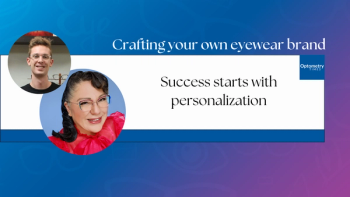
The private-label lens phenomenon
Several members of the lens industry came together Friday during a forum at Vision Expo East to discuss the rising trend of private-label progressive lenses.
New York City-Several members of the lens industry came together Friday during a forum at
There are currently over 100 private-label designs on the U.S. market. As the market continues to expand, managed care will have to contend with these private-label lenses and lens casters will play a more aggressive role.
“Managed care has become a cancer, for lack of a better term. I’m not afraid to say it. The stronger and the bigger they get, we become slaves to managed care and until we stand up and say we’re not going take it anymore, they’re going to continue,” says Lloyd Yazbek, president of Central One Optical, a laboratory in Youngstown, OH. But, he says, managed care plans will be pressured into private-label lenses.
With the development of free-form lens processing technology, lenses can be personalized for individual patients.
Private-label, free-form lenses offer:
• Flexibility for the lab
• Price tier potential for the ECP
• Strong profit margins for both the lab and ECP
• Competitive advantage
• Quality designs
“The bad rap on free-form is that people think it’s a cheap lens-it’s not a cheap lens,” says Yazbek.
If an eyecare professional wants to start selling private-label lenses, Michael Palkovicz, president of I-See Optical laboratory in Blackwood, NJ, says marketing and staff education are the most important factors.
“When you market it in your practice, you market it as the best-that it is able to be designed to meet the needs of that patient,” says Yazbek.
Kurt Gardner, national sales and support manager for Indizen Optical Technologies, says that ECPs are faced with an immense amount of competition, so they should play up the exclusivity of the product.
“You’re building your practice brand on the brand of the laboratory,” says Gardner.
At the same time, Gardner warned, “You don’t want to over-promise. There’s no such thing as the perfect progressive, although we’re trying.”
Newsletter
Want more insights like this? Subscribe to Optometry Times and get clinical pearls and practice tips delivered straight to your inbox.
















































.png)


